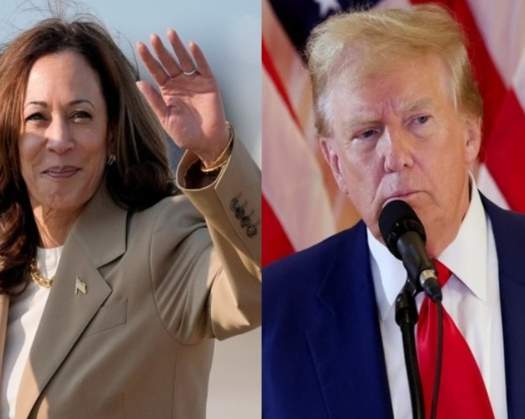Washington, D.C.: Within the span of less than 24 hours, the citizens of the United States will convene to cast their ballots in one of the most pivotal elections of our time. This election will not only determine the course of the nation but also exert significant influence on the global geopolitical landscape for the forthcoming four years.
An examination of the critical components involved in the election and the subsequent result process.
The Electoral Quota
The total number of electoral votes available is 538, distributed as follows: 435 for the House of Representatives, 100 for the Senate, and 3 for Washington, D.C. A candidate is required to secure a minimum of 270 electoral votes to ascend to the presidency. Each state is allocated a specific number of electoral votes. California holds the highest number with 54, followed by Texas (40) and Florida (30). Conversely, states such as North Dakota, South Dakota, Delaware, and Vermont are allocated a minimum of three electoral votes.
The Electoral System
The United States operates under the 'Winner Takes All' model. In this system, the candidate who garners the highest number of votes in a state is awarded all of that state's electoral votes.
However, this system is not universally applied. It is in effect in Washington, D.C., and 48 out of the 50 states. The exceptions to this rule are the states of Maine and Nebraska, which adhere to a proportional system.
It is also important to note that in addition to the lower chamber of the United States Congress (the House of Representatives), the upper chamber (the Senate) will also be subject to a contest, with its 34 seats up for election. The entire membership of the House of Representatives will be re-elected, with one-third of the Senate seats also up for renewal.
Electoral College and Popular Vote:
In the United States, the victor of the presidential election is determined by the Electoral College. This institution serves as an intermediary body responsible for selecting the President. Under this system, citizens from all states cast their votes to elect the electors of the Electoral College, who, in turn, formally vote to elect the President in December.
Each state is allocated a specific number of electors, which is determined by the number of seats it holds in both the House of Representatives and the Senate. The rationale behind this allocation is to ensure equitable representation of all states.
Conversely, the popular vote represents the total number of votes received by a candidate. It is important to acknowledge that there have been instances where a candidate has garnered more popular votes but has not secured the presidency due to the Electoral College system.
A notable example of this occurred in the 2016 election, where Donald Trump emerged victorious over Hillary Clinton by a margin of 304 electoral votes to 227, despite trailing her in the popular vote by over 2 percentage points and 28 lakh votes. Similarly, in the 2000 election, Republican George W. Bush narrowly defeated Democrat Al Gore, with the outcome of the contest being ultimately decided by the Supreme Court.
What are Swing States?
Typically, the majority of states in the United States exhibit a preference for one political party. States that lean towards the Democratic Party are referred to as Blue states, while those that lean towards the Republican Party are termed Red states. However, there are seven states known as Swing States, which do not adhere to a consistent trend and are subject to change. These states play a pivotal role in the selection of the presidential candidate.
The seven Swing States are Nevada (6), Arizona (11), North Carolina (16), Georgia (16), Wisconsin (10), Michigan (15), and Pennsylvania (19).
The Race for the White House
In the midst of a multitude of candidates, the United States presidential election is predominantly contested between the Democratic and Republican parties. Incumbent Democrats are backing Vice President Kamala Harris, who is on a mission to etch her name in history by becoming the first woman to hold the presidency. Should she be elected, she would also achieve the distinction of being the first President of Indian origin in the United States.
Conversely, the Republican nominee is former President Donald Trump, who is seeking a remarkable return to the Oval Office after a tumultuous departure from the White House in 2020. It is noteworthy that a victory for Trump would mark the first time in over a century that a president has served two non-consecutive terms in office.
Polls indicate a tight race between Trump and Harris, with all projections falling within the margin of error. According to the 'fiveThirtyEight' platform of ABC News, Vice President Kamala Harris leads by a mere 1 percentage point over Donald Trump, with a 48% to 46.9% margin.
NBC News and Emerson College have forecasted a national tie at 49% for both candidates. Ipsos has suggested a three-point lead for Harris at 49% to 46%, whereas AtlasIntel projects a two-point lead for Trump at 50% to 48%.
The Schedule of Polling and Counting
The timing of polling hours will vary by state, but the majority will be conducted between 6 am and 8 pm on Tuesday (local time). Exit polls will commence as soon as voting begins, with the final results being announced only after the completion of the counting process across all states.
The initial polls will close at approximately 7 pm ET (5:30 am IST) in six states, including Georgia. The final polls will conclude in the blue state of Hawaii and the red state of Alaska at midnight ET (10:30 am IST). The collection of all votes will conclude by 1 pm ET (11:30 am IST), at which point the counting process will commence. The determination of the winner in smaller states may be expedited, while the projection of results in key battleground states could take several hours.










